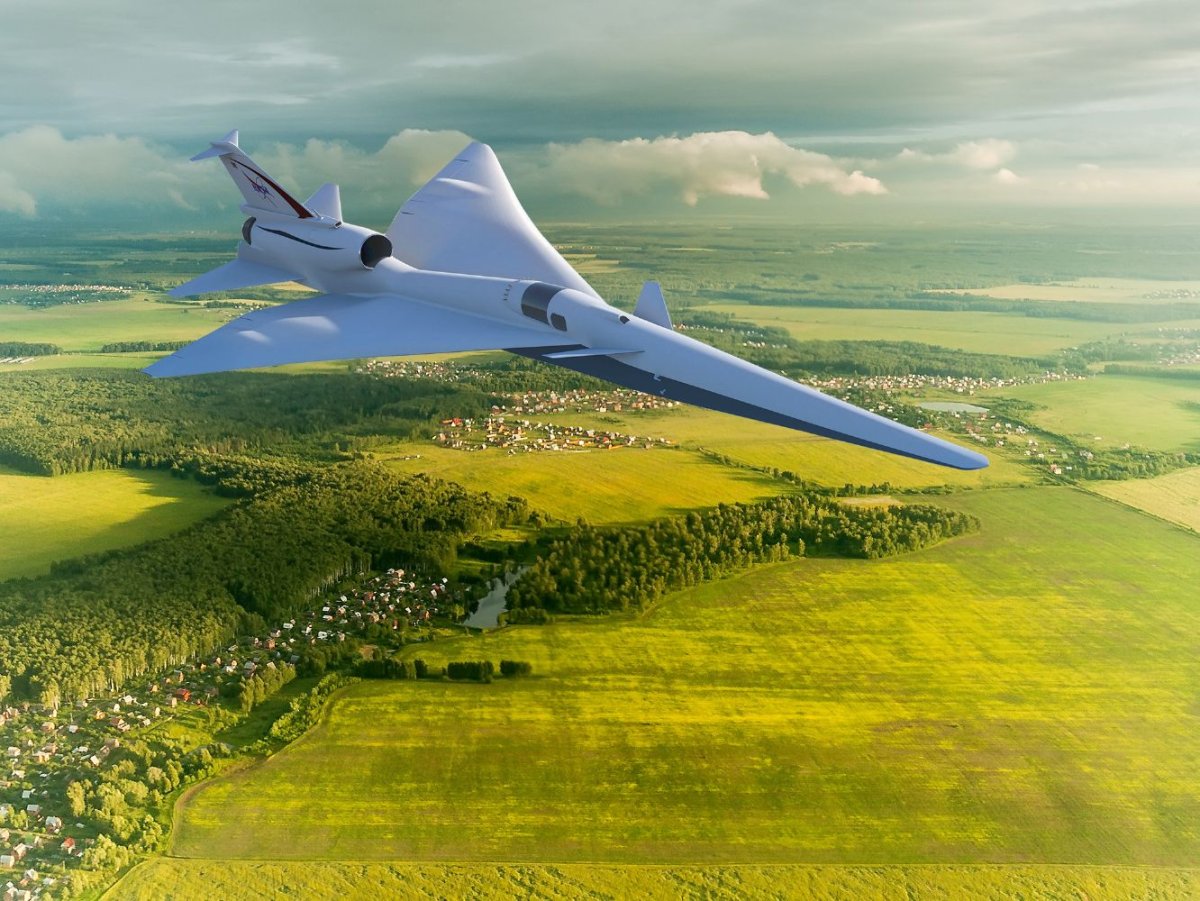In 1947, Captain Chuck Yeager became the first human to fly faster than the speed of sound. Piloting the X-1 supersonic plane, he left this goal in the dust of the craft he nicknamed "Glamorous Glennis" after his wife.
Now, more than 70 years later, the U.S. Air Force has given the latest supersonic plane its experimental "X-plane" designation, NASA has revealed. The craft—now called the X-59 QueSST—is designed to shed the deafening sonic booms normally associated with super-fast airplanes.
Aerospace and defense company Lockheed Martin is currently building the X-59 with NASA. Before it gets off the ground, the space agency has been testing out another plane that can overcome the ear-splitting kabooms of supersonic travel. NASA's F/A-18 can produce a soft thud when it charges past the speed of sound. But this repurposed fighter jet is limited. It can create the quiet thump only in a small area. The X-59 will be shaped to avoid loud booms altogether, NASA reported.
"The X-59 is a research aircraft flown by a single pilot," Peter Coen, project manager for the agency's Commercial Supersonic Technology Project, explained in a statement emailed to Newsweek. "It contains design features such as its long nose and carefully sculpted wing shape that will reduce the noise from future designs."

"With the X-59 you're still going to have multiple shockwaves because of the wings on the aircraft that create lift and the volume of the plane. But the airplane's shape is carefully tailored such that those shockwaves do not combine," Ed Haering, a NASA aerospace engineer, said in an agency statement.
"Instead of getting a loud boom-boom, you're going to get at least two quiet thump-thump sounds, if you even hear them at all," he added.
NASA released a video (see below) of an F/A-18 demonstrating the classic two-punch sonic boom you'd expect from supersonic flight, before circling round to a quieter sonic thump. Skip to 0:43 for the boom, and 2:34 for the muffled thuds.
In November 2018, residents in Galveston, Texas, will be lucky—or unlucky—enough to watch the F/A-18 plane zip through their skies, NASA reported. Sensors will measure sound levels in the island town and 500 volunteers will report back on their impressions of the noise—if they hear anything at all.
After further testing and safety approval, pilots are set to fly the X-59 over certain communities from late 2022, the space agency stated. After researchers gather responses from locals, it will be up to regulators at home and abroad to decide on the rules for this new kind of supersonic travel.
NASA associate administrator for aeronautics Jaiwon Shin is confident the experimental plane is a huge step forward for air travel. "I'm confident that the contributions the X-59 QueSST will make to our nation and the world will ensure its place among the greatest NASA X-planes ever flown," he said in a statement.
Although it's not designed for commercial use, Coen hopes the research craft will lead the way in supersonic flight. "If successful… the X-59 QueSST will open the door a to future generation of quiet supersonic travel," he said.
This article has been updated to include comment from Peter Coen.
Uncommon Knowledge
Newsweek is committed to challenging conventional wisdom and finding connections in the search for common ground.
Newsweek is committed to challenging conventional wisdom and finding connections in the search for common ground.
About the writer
Katherine Hignett is a reporter based in London. She currently covers current affairs, health and science. Prior to joining Newsweek ... Read more
To read how Newsweek uses AI as a newsroom tool, Click here.






